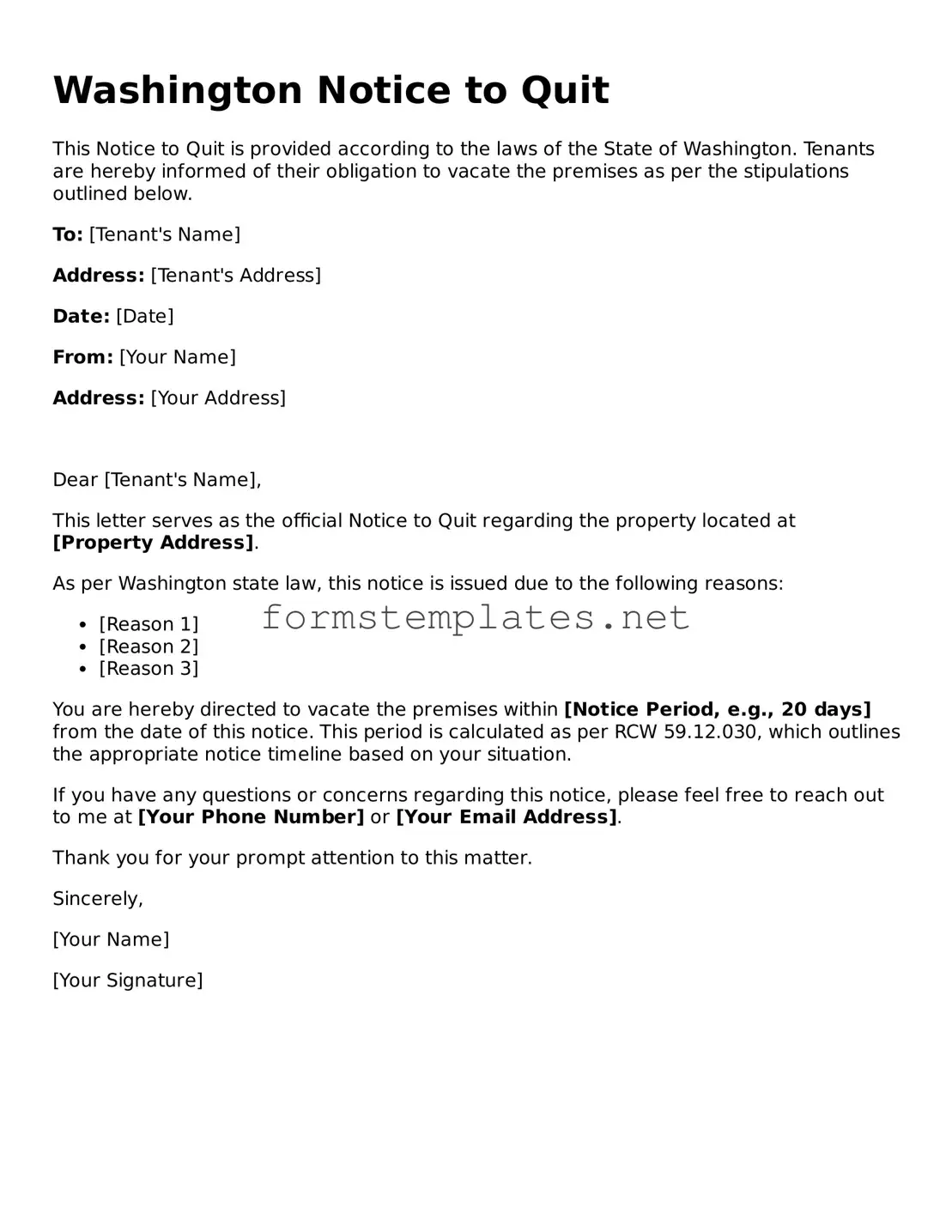Washington Notice to Quit
This Notice to Quit is provided according to the laws of the State of Washington. Tenants are hereby informed of their obligation to vacate the premises as per the stipulations outlined below.
To: [Tenant's Name]
Address: [Tenant's Address]
Date: [Date]
From: [Your Name]
Address: [Your Address]
Dear [Tenant's Name],
This letter serves as the official Notice to Quit regarding the property located at [Property Address].
As per Washington state law, this notice is issued due to the following reasons:
- [Reason 1]
- [Reason 2]
- [Reason 3]
You are hereby directed to vacate the premises within [Notice Period, e.g., 20 days] from the date of this notice. This period is calculated as per RCW 59.12.030, which outlines the appropriate notice timeline based on your situation.
If you have any questions or concerns regarding this notice, please feel free to reach out to me at [Your Phone Number] or [Your Email Address].
Thank you for your prompt attention to this matter.
Sincerely,
[Your Name]
[Your Signature]
